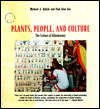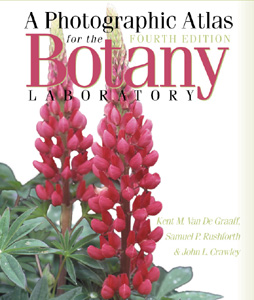|
Wk
|
Day
|
Date
|
Area
|
Topic
|
|
1
|
Tues
|
15 Aug
|
Introduction
|
Outdoor: Ethnobotanical garden tour
|
|
1
|
Thurs
|
17 Aug
|
Botany
|
Outdoor lower plants field hike:
Cyanobacteria, bryophytes, SVPs, lycopodium, ferns. WET MUDDY
STEEP.
|
|
2
|
Tues
|
22 Aug
|
Ethnobotany
|
Balick and Lee presentations on
ethnobotany and on integrative medicine.
|
|
2
|
Thurs
|
24 Aug
|
Ethnography
|
Lee on surveys.
|
|
3
|
Tues
|
29 Aug
|
Ethnography
|
Preparation for group presentations.
|
|
3
|
Thurs
|
31 Aug
|
Ethnography
|
Group presentations cyanobacteria,
bryophytes, lycopodium, ferns.
|
|
4
|
Tues
|
05 Sep
|
Test One
|
|
|
4
|
Thurs
|
07 Sep
|
Ethnography
|
People, plants, and culture chapter
two. Plants that heal lecture. Morinda citrifolia healing uses.
|
|
5
|
Tues
|
12 Sep
|
Botany
|
Plant collecting process.
|
|
5
|
Thurs
|
14 Sep
|
Ethnography
|
Healing plant individual
presentations
|
|
6
|
Tues
|
19 Sep
|
Ethnography
|
Healing plant individual
presentations
|
|
6
|
Thurs
|
21 Sep
|
Botany
|
Outdoor field trip: Gymnosperms and
plants with economic value. Botanic garden road trip and walk.
|
|
7
|
Tues
|
26 Sep
|
Botany
|
Preparation for gymnosperm
presentations
|
|
7
|
Thurs
|
28 Sep
|
Botany
|
Group presentations: gymnosperms
|
|
8
|
Tues
|
03 Oct
|
Midterm
|
|
|
8
|
Thurs
|
05 Oct
|
Ethnography
|
Balick three. Plants as food
lecture.
|
|
9
|
Tues
|
10 Oct
|
Ethnography
|
Outdoor walk: Food plants of Nanyo
|
|
9
|
Thurs
|
12 Oct
|
Ethnography
|
Plants as food: Each cultural group
brings a traditional food to share.
|
|
10
|
Tues
|
17 Oct
|
Botany
|
Outdoor field walk: Angiosperms:
Vegetative morphology
|
|
10
|
Thurs
|
19 Oct
|
Ethnography
|
Balick four. Plants as the basis for
material culture lecture.
|
|
11
|
Tues
|
24 Oct
|
UN Day
|
|
|
11
|
Thurs
|
26 Oct
|
Ethnography
|
Field trip: Marekeiso production
|
|
12
|
Tues
|
31 Oct
|
Ethnography
|
Material culture individual
presentations
|
|
12
|
Thurs
|
02 Nov
|
Ethnography
|
Material culture individual
presentations
|
|
13
|
Tues
|
07 Nov
|
Botany
|
Outdoor field walk: Angiosperms:
Floral morphology. Sketch flowers.
|
|
13
|
Thurs
|
09 Nov
|
Test Two
|
|
|
14
|
Tues
|
14 Nov
|
Econobotany
|
URL Lab: World foods and fruits.
Finding information on the web.
|
|
14
|
Thurs
|
16 Nov
|
Ethnography
|
Balick five. Entering other worlds
lecture: Five types of psychoactive substances. Memes and Areca
catechu.
|
|
15
|
Tues
|
21 Nov
|
Ethnography
|
Piper methysticum: Chemistry and
Uses, Legends
|
|
15
|
Thurs
|
23 Nov
|
Ethnography
|
Field Trip: Kava cultural ceremony
|
|
16
|
Tues
|
28 Nov
|
Ethnogarden
|
Outdoor work with dirt:
Ethnobotanical garden clean-up
|
|
16
|
Thurs
|
30 Nov
|
Ethnogarden
|
Outdoor work with dirt:
Ethnobotanical garden BRING A PLANT TO PLANT! Take Home Final
|
|
17
|
Tues
|
05 Dec
|
|
Work period for final
|
|
18
|
Wed
|
06 Dec
|
|
Take home final examination due by
5:00 P.M.
|
 Plants, people, and culture: The Science of Ethnobotany. ©2005
Balick, Michael J., and Cox, Paul Alan. ISBN 0615129536. Distributed by the American Botanical Council, P.O. Box 144345, Austin, Texas, 78714-4345,
Herbalgram.org, Phone: 512-926-4900
Plants, people, and culture: The Science of Ethnobotany. ©2005
Balick, Michael J., and Cox, Paul Alan. ISBN 0615129536. Distributed by the American Botanical Council, P.O. Box 144345, Austin, Texas, 78714-4345,
Herbalgram.org, Phone: 512-926-4900